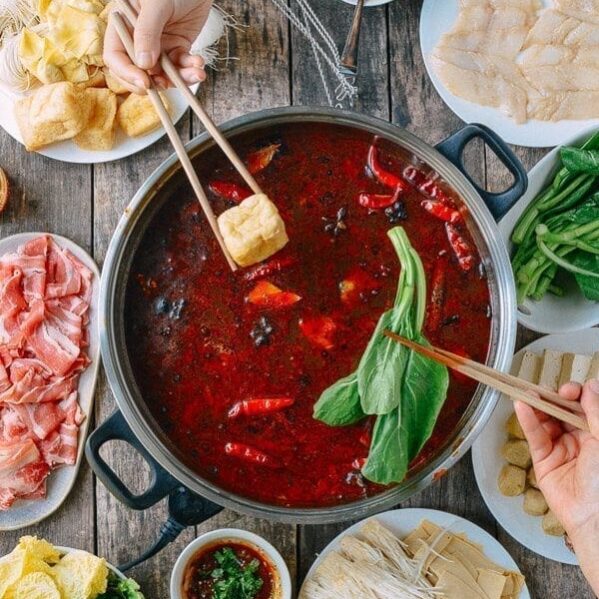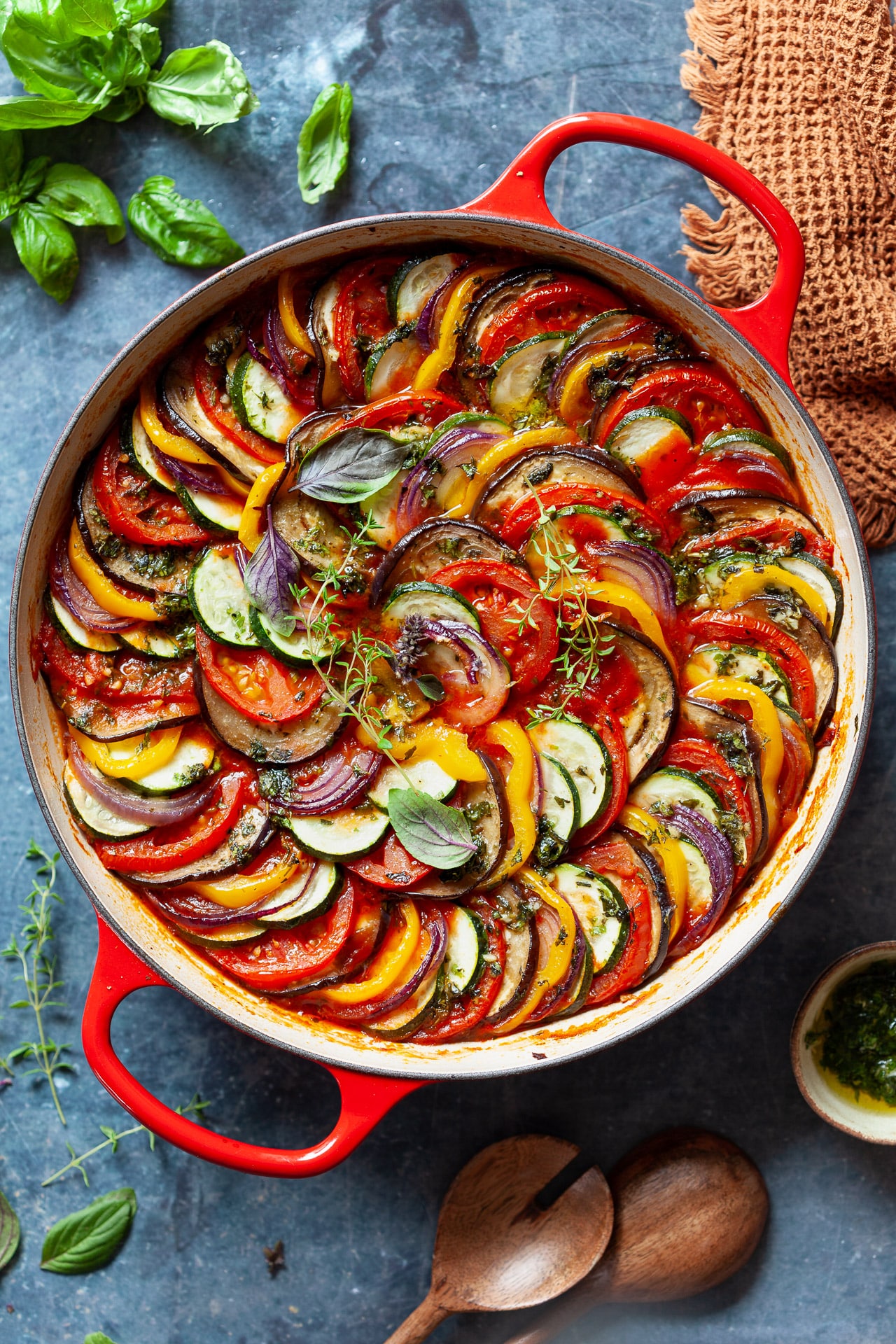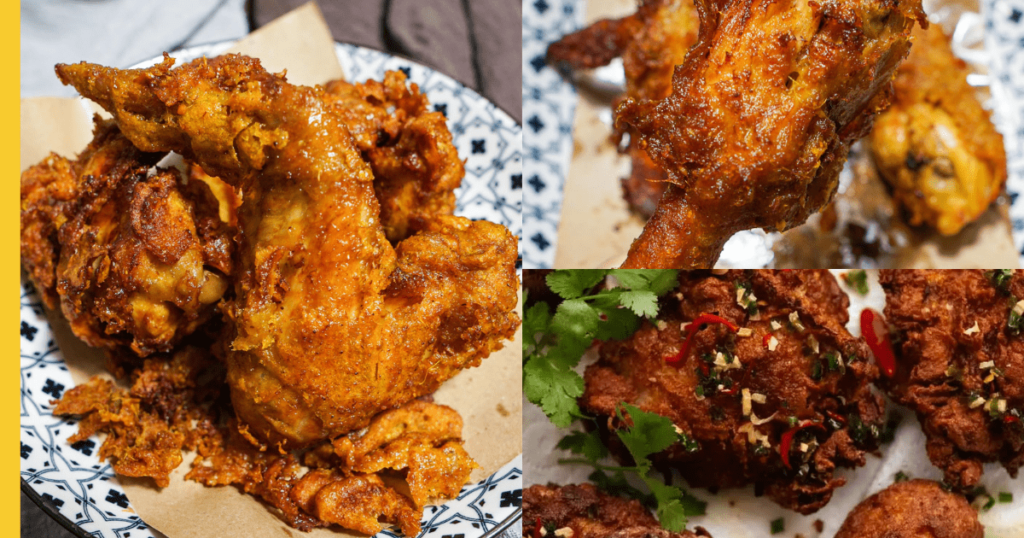A Spicy Journey: Exploring the World of Sichuan Hot Pot
Related Articles
- A Journey Through Time: The Alluring World Of Swiss Fondue
- A Journey Into The Sweetest Of Delights: Mastering The Art Of Authentic Turkish Baklava With Pistachios And Honey
- Vegan Thai Curries: Balancing Spices And Coconut For Authentic Flavors
- A Journey Through Flavors: Uncovering The Secrets Of Greek Moussaka
- A Culinary Journey Through The Middle East: Shawarma, Falafel, And More You Can Make At Home
Introduction
Welcome to our in-depth look at A Spicy Journey: Exploring the World of Sichuan Hot Pot
A Spicy Journey: Exploring the World of Sichuan Hot Pot

Sichuan hot pot, a fiery and flavorful culinary experience, is more than just a meal; it’s a social event, a communal adventure, and a testament to the bold and vibrant flavors of Sichuan cuisine. This beloved dish, known as huǒguō (火锅) in Mandarin, has captivated taste buds across China and beyond, leaving a trail of tingling lips and satisfied smiles in its wake. But what exactly makes Sichuan hot pot so special? And how can you recreate this fiery feast in your own kitchen? Join us on a spicy journey as we delve into the history, techniques, and tantalizing recipes of this iconic dish.
A History Steeped in Spice: The Origins of Sichuan Hot Pot
The history of Sichuan hot pot, like the dish itself, is a vibrant tapestry woven with tradition and innovation. While its exact origins remain shrouded in the mists of time, historians trace its roots back to the Three Kingdoms period (220-280 AD), a time of great upheaval and culinary experimentation in China.
The Early Days: The earliest form of hot pot likely involved a simple clay pot filled with boiling water, where diners would add their own ingredients, creating a communal dining experience. This concept, known as "guō" (锅), meaning "pot," served as the foundation for the modern-day hot pot.
The Sichuan Influence: As the centuries passed, Sichuan’s unique culinary landscape, characterized by its bold use of chili peppers and the signature Sichuan peppercorn, began to influence the dish. This led to the development of the spicy, aromatic hot pot that we know and love today.
The Rise of a Culinary Icon: By the Ming and Qing dynasties (1368-1912), hot pot had become a staple in Sichuan households, evolving from a simple meal to a culinary celebration. During this period, dedicated hot pot restaurants began to flourish, offering a diverse range of broths, ingredients, and dipping sauces.
The Modern Era: In the 20th century, Sichuan hot pot gained national recognition, becoming a symbol of Chinese culinary ingenuity and a popular choice for gatherings and celebrations. Today, it’s enjoyed by millions across the globe, a testament to its enduring appeal and adaptability.
The Anatomy of a Sichuan Hot Pot: Exploring the Essential Elements
Sichuan hot pot is more than just a pot of boiling broth; it’s a carefully orchestrated symphony of flavors, textures, and ingredients. Let’s break down the key elements that make this dish so unique:
1. The Broth: The Foundation of Flavor

The broth is the heart and soul of any hot pot, and Sichuan hot pot is no exception. Sichuan chefs use a variety of techniques to create broths that range from fiery and bold to subtly aromatic and flavorful. Here are some popular broth styles:
- Spicy & Aromatic: The most iconic Sichuan hot pot broth, often featuring a blend of chilies, Sichuan peppercorns, and other spices that create a tingling, numbing sensation.
- Tomato-Based: This broth offers a sweeter, tangier flavor profile, ideal for those who prefer less heat.
- Mushroom Broth: A rich and savory broth made with a variety of mushrooms, perfect for a more delicate flavor experience.
- Bone Broth: A hearty and nourishing broth made from simmered bones, offering a deep, umami flavor.
2. The Dipping Sauces: A Symphony of Flavor
No Sichuan hot pot experience is complete without a selection of dipping sauces. These sauces allow diners to customize their meal, adding their own personal touch to the fiery flavors. Here are some classic dipping sauce combinations:
- Sesame Oil & Chili Oil: A simple yet effective sauce, combining the nutty flavor of sesame oil with the fiery kick of chili oil.
- Garlic & Chili Sauce: A pungent and aromatic sauce, perfect for adding a spicy and garlicky punch.
- Soy Sauce & Vinegar: A tangy and savory sauce, ideal for balancing the heat of the broth and ingredients.
- Peanut Sauce: A creamy and nutty sauce, perfect for adding a touch of richness to the meal.

3. The Ingredients: A Culinary Tapestry
The variety of ingredients used in Sichuan hot pot is what truly sets it apart. From thinly sliced meats and seafood to fresh vegetables and tofu, the possibilities are endless. Here are some popular categories:
- Meats: Sliced beef, lamb, pork, duck, chicken, and even offal are popular choices.
- Seafood: Shrimp, fish, squid, and crab add a touch of freshness and flavor.
- Vegetables: A wide array of fresh vegetables, such as mushrooms, bok choy, spinach, and lotus root, add texture and nutritional value.
- Tofu: Various types of tofu, from silken to firm, provide a protein-rich and versatile option.
- Noodles & Grains: Add a hearty base to your meal with rice noodles, wheat noodles, or even rice.
4. The Hot Pot Experience: A Communal Feast
Sichuan hot pot is a communal experience, bringing people together around a shared pot of boiling broth. Diners can choose their own ingredients and dipping sauces, creating a personalized and interactive meal. The act of cooking and sharing the food fosters a sense of connection and camaraderie, making it a perfect choice for social gatherings and celebrations.
Mastering the Art of Sichuan Hot Pot: A Guide to Creating Your Own Spicy Feast
Now that you have a better understanding of the elements that make up a Sichuan hot pot, it’s time to dive into the kitchen and create your own fiery culinary adventure. Here’s a step-by-step guide to making your own Sichuan hot pot:
1. Prepare the Broth:
- Classic Sichuan Spicy Broth:
- In a large pot, combine 1 gallon of water, 1/2 cup of chicken or beef bones, 1/4 cup of soy sauce, 1/4 cup of Shaoxing wine, 1 tablespoon of ginger, 1 tablespoon of garlic, 1 star anise, 1 cinnamon stick, 2 cloves, 1/2 cup of dried chili peppers, 1/4 cup of Sichuan peppercorns, and 1 tablespoon of salt.
- Bring the mixture to a boil, then reduce heat and simmer for at least 2 hours, skimming off any foam that forms.
- Strain the broth before serving.
- Tomato Broth:
- In a large pot, combine 1 gallon of water, 1/2 cup of diced tomatoes, 1/4 cup of tomato paste, 1/4 cup of soy sauce, 1 tablespoon of sugar, 1 tablespoon of ginger, 1 tablespoon of garlic, and 1 tablespoon of salt.
- Bring the mixture to a boil, then reduce heat and simmer for 30 minutes.
- Strain the broth before serving.
- Mushroom Broth:
- In a large pot, combine 1 gallon of water, 1/2 cup of assorted mushrooms (shiitake, oyster, enoki), 1/4 cup of soy sauce, 1 tablespoon of ginger, 1 tablespoon of garlic, and 1 tablespoon of salt.
- Bring the mixture to a boil, then reduce heat and simmer for 30 minutes.
- Strain the broth before serving.
2. Prepare the Ingredients:
- Meats: Thinly slice beef, lamb, pork, or chicken. Marinate in soy sauce, Shaoxing wine, ginger, and garlic for at least 30 minutes before cooking.
- Seafood: Clean and prepare shrimp, fish, squid, or crab.
- Vegetables: Wash and cut vegetables into bite-sized pieces.
- Tofu: Cut tofu into cubes or slices.
- Noodles & Grains: Prepare noodles or rice according to package instructions.
3. Prepare the Dipping Sauces:
- Sesame Oil & Chili Oil: Combine 1/4 cup of sesame oil, 1 tablespoon of chili oil, and 1 tablespoon of soy sauce.
- Garlic & Chili Sauce: Combine 2 tablespoons of minced garlic, 1 tablespoon of chili oil, 1 tablespoon of soy sauce, and 1 tablespoon of vinegar.
- Soy Sauce & Vinegar: Combine 1/4 cup of soy sauce, 1 tablespoon of vinegar, and 1 tablespoon of sugar.
- Peanut Sauce: Combine 1/2 cup of peanut butter, 1/4 cup of soy sauce, 1 tablespoon of sesame oil, 1 tablespoon of sugar, and 1 tablespoon of water.
4. Assemble the Hot Pot:
- Place a large pot or wok on a burner and fill it with the prepared broth.
- Bring the broth to a boil.
- Arrange a selection of ingredients around the pot, making sure to keep them separate.
- Place the dipping sauces in small bowls.
- Serve with chopsticks, ladles, and bowls.
5. Enjoy the Experience:
- Once the broth is boiling, use a ladle to scoop out ingredients and cook them in the broth for a few seconds to minutes, depending on the ingredient.
- Dip the cooked ingredients in your chosen dipping sauce and enjoy.
- Continue cooking and dipping until all ingredients are finished.
Tips for Cooking Sichuan Hot Pot:
- Start with a small amount of broth and add more as needed. This will prevent the broth from becoming too diluted as you add ingredients.
- Use a good quality pot or wok that can withstand high heat.
- Don’t overcrowd the pot with ingredients. This will prevent the broth from boiling properly and the ingredients from cooking evenly.
- Cook the ingredients for a short amount of time. Overcooked ingredients will become tough and rubbery.
- Add a splash of water to the broth if it becomes too thick.
- Adjust the spice level of the broth to your liking. You can add more chili peppers or Sichuan peppercorns for a hotter broth, or use less for a milder broth.
- Get creative with your ingredients and dipping sauces. There are no hard and fast rules when it comes to Sichuan hot pot.
Beyond the Basic Recipe: Exploring Variations and Innovations
Sichuan hot pot is a versatile dish that can be adapted to suit different tastes and preferences. Here are some variations and innovations to explore:
- Dry Pot: This variation involves stir-frying the ingredients with a spicy sauce and then serving them in a hot pot.
- Mala Xiang Guo: This popular street food dish features a variety of ingredients stir-fried with a spicy and numbing sauce.
- Hot Pot with Different Broths: Experiment with different types of broth, such as bone broth, seafood broth, or vegetarian broth.
- Hot Pot with Different Dipping Sauces: Try different combinations of dipping sauces, such as peanut sauce with sesame oil, or garlic sauce with chili oil.
- Hot Pot with Different Ingredients: Add your own favorite ingredients to the hot pot, such as seafood, mushrooms, or tofu.
- Hot Pot with Different Flavors: Try adding different spices and herbs to the broth, such as star anise, cinnamon, cloves, or bay leaves.
The Cultural Significance of Sichuan Hot Pot
Sichuan hot pot is more than just a meal; it’s a cultural phenomenon that reflects the unique spirit and traditions of Sichuan. Here are some of the cultural aspects of this beloved dish:
- Community and Camaraderie: Sichuan hot pot is often enjoyed with family and friends, fostering a sense of community and shared experience. The communal nature of the dish encourages conversation and laughter, making it a perfect choice for social gatherings and celebrations.
- Spice and Boldness: The bold and fiery flavors of Sichuan hot pot reflect the adventurous and daring spirit of the Sichuan people. The use of chili peppers and Sichuan peppercorns adds a unique dimension to the dish, challenging the palate and stimulating the senses.
- Adaptability and Innovation: Sichuan hot pot is a testament to the adaptability and creativity of Sichuan cuisine. Chefs and home cooks alike continue to experiment with new flavors and ingredients, creating a diverse and constantly evolving culinary landscape.
Conclusion: A Spicy Journey Continues
Sichuan hot pot is a culinary adventure that promises a fiery and flavorful experience. From its humble origins to its global popularity, this iconic dish has captivated taste buds and fostered a sense of community across generations. Whether you’re a seasoned hot pot enthusiast or a curious newcomer, the world of Sichuan hot pot offers a tantalizing journey for your palate and a warm invitation to share a spicy feast with loved ones. So gather your friends, prepare your ingredients, and embark on your own spicy adventure with the fiery and flavorful world of Sichuan hot pot.
Closure
We hope this article has helped you understand everything about A Spicy Journey: Exploring the World of Sichuan Hot Pot. Stay tuned for more updates!
Make sure to follow us for more exciting news and reviews.
Feel free to share your experience with A Spicy Journey: Exploring the World of Sichuan Hot Pot in the comment section.
Keep visiting our website for the latest trends and reviews.





